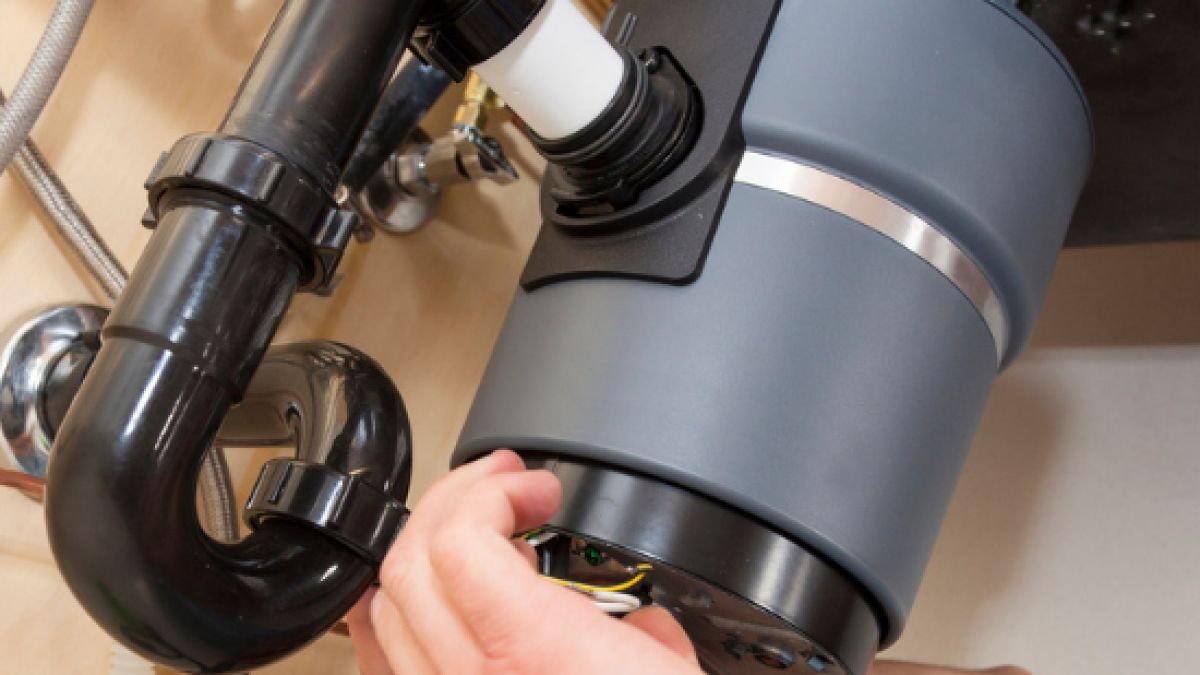The article in the next paragraphs on the subject of Why Is My Garbage Disposal Leaking From the Bottom? is amazingly enjoyable. Read it yourself and figure out what you think about it.

Garbage disposals are important kitchen area home appliances that help in taking care of food waste successfully. Nevertheless, a leaking garbage disposal can be an aggravating and untidy trouble to handle. The good news is, several leaks can be repaired quickly with a few basic actions. In this write-up, we will certainly go over just how to repair a leaking garbage disposal successfully.
Introduction
Garbage disposals are mounted under kitchen area sinks and are created to shred food waste right into smaller sized items, allowing it to pass through the pipes system conveniently. While these gadgets are generally reliable, leakages can take place in time due to deterioration, loose connections, or damages to the device.
Common Causes of Leaks in Waste Disposals
Worn Seals and Gaskets
Seals and gaskets play an important function in preventing water from dripping out of the garbage disposal. In time, these parts can deteriorate, leading to leaks around the disposal unit.
Loose Connections
The links in between the garbage disposal and the pipes system can come to be loose gradually, creating water to leak out during operation.
Cracks or Openings in the Disposal Unit
Physical damage to the garbage disposal, such as fractures or openings in the real estate, can likewise cause leakages.
Identifying the Source of the Leak
Prior to trying to deal with a dripping waste disposal unit, it is important to recognize the source of the leak. This can typically be done via visual examination or by performing basic examinations.
Visual Inspection
Examine the garbage disposal unit thoroughly for any kind of signs of water leakage. Pay very close attention to areas around seals, gaskets, and link factors.
Examining for Leaks
One method to test for leakages is by running water via the disposal system and looking for any type of noticeable indications of leakage.
Tools and Products Needed for Repairing a Dripping Garbage Disposal
Before starting the repair work procedure, gather the needed devices and products, including a screwdriver, flexible wrench, plumbing professional's putty, replacement seals or gaskets, and epoxy or patching material for repairing cracks or holes.
Step-by-Step Guide to Taking Care Of a Dripping Waste Disposal Unit
Shut off the Power
Prior to trying any fixings, make sure that the power to the waste disposal unit device is turned off to avoid the danger of electric shock.
Locate the Leak
Identify the specific place of the leakage and identify the reason.
Tighten Connections
Use a wrench to tighten any type of loose links between the disposal system and the plumbing system.
Change Seals or Gaskets
If the leak results from worn seals or gaskets, get rid of the old elements and change them with new ones.
Patching Fractures or Openings
For splits or holes in the disposal device, use epoxy or an ideal patching material to seal the damaged area.
Examining the Garbage Disposal After Repair
Once the repair is complete, check the waste disposal unit by running water through it to ensure that the leak has actually been settled.
Preventive Maintenance Tips to Prevent Future Leaks
To avoid future leakages, it is important to carry out routine upkeep on your garbage disposal. This includes keeping it clean, staying clear of putting non-food things or difficult things down the disposal, and occasionally checking for leakages or other concerns.
Conclusion
Finally, taking care of a dripping waste disposal unit is a fairly straightforward process that can be completed with fundamental tools and products. By adhering to the steps laid out in this short article and exercising preventive upkeep, you can keep your waste disposal unit in good working problem and prevent pricey repairs in the future.
HERE’S HOW TO FIX YOUR GARBAGE DISPOSAL
WHAT TO DO IF SOMETHING IS STUCK IN YOUR GARBAGE DISPOSAL
If the impeller won’t turn, there’s probably something stuck in the disposal. It could be a steak bone or peach pit, although plumbers report pulling all sorts of inappropriate objects out of disposals, such as bottle caps or aluminum foil. Make sure power to the disposal is off, and look inside to see if you can see the source of the jam.
Never stick your fingers in a disposal. Pull out anything you see with tongs or pliers.
If the disposal still won’t work, it may be time to call a plumber or consider buying a new disposal. GEM Plumbing & Heating is here for all of your garbage disposal needs.
WHAT TO DO IF YOUR GARBAGE DISPOSAL DRAIN IS CLOGGED
Take everything out from underneath your sink and put a bucket or other container under your disposal to catch any water that drains out. Disconnect your disposal from the power supply. If it’s plugged into a wall outlet, unplug it. If it’s hardwired into an electrical box, go to the electrical panel and turn off the breaker for the disposal. Pour ¼ cup of baking soda into the drain, followed by ½ cup of white vinegar. Give the solution a few minutes to fizz and do its work. Look into the disposal with a flashlight to see if you can see an object that might be causing the clog. If you see it, remove it using tongs or pliers. MORE TIPS ON DEALING WITH A CLOGGED GARBAGE DISPOSAL
Never use drain cleaner in a garbage disposal. It can damage the plastic parts inside the disposal. You can also be splashed with the caustic liquid while working to clear the clog. Beware! Never stick your fingers into a garbage disposal. Trust us — not a good idea. In many instances, your dishwasher drains through your garbage disposal. This allows the disposal to grind any large food particles that may be drained out of your dishwasher. There are some jurisdictions, however, where the plumbing code prohibits such a connection. WHAT TO DO WHEN YOUR DISHWASHER DRAINS THROUGH THE DISPOSAL
Run some water in the sink so your plunger has at least a ½-inch of water to create a seal and plunge vigorously up and down several times. You may need to repeat this several times. Run hot water down the drain to clear any residue that remains.

Do you really like more info about Why Is ? Make a remark down below. We will be interested to find out your views about this blog posting. We hope that you come back again in the near future. Sharing is caring. Helping others is fun. Thank-you for your time spent reading it.
Call Today